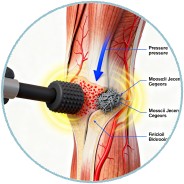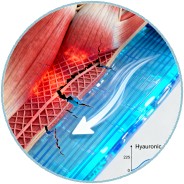Self-Myofascial Release (SMR) has garnered significant attention in the realm of sports medicine and rehabilitation due to its potential to enhance physical performance and mitigate musculoskeletal issues. SMR, often executed with tools like foam rollers or specialized massagers, targets the myofascial system—a complex network of connective tissues that envelops and interconnects muscles, bones, and organs. This system plays a pivotal role in maintaining structural integrity, facilitating movement, and transmitting forces throughout the body. When this system is compromised due to injury, overuse, or poor posture, it can lead to restricted mobility, pain, and decreased athletic performance. SMR aims to alleviate these issues by promoting better fascial gliding, enhancing flexibility, and strengthening core muscles.
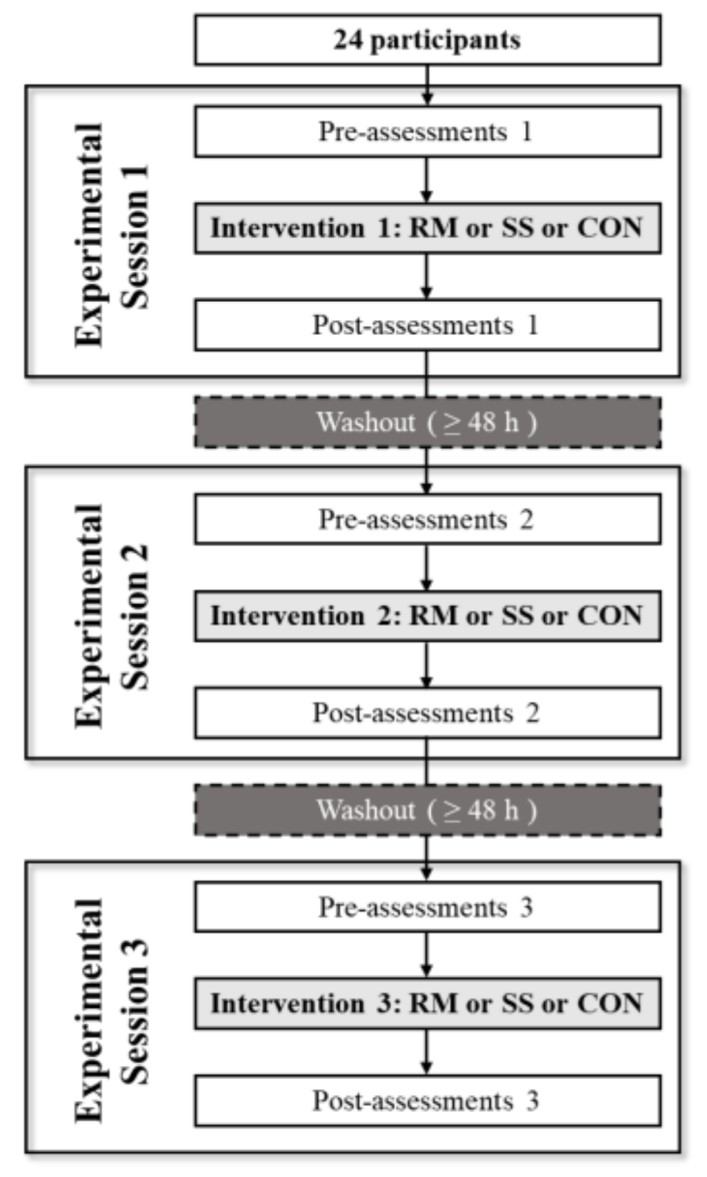 Fig.1 Flowchart of the crossover study: RM = roller massage; SS = static stretching; CON = control. (Nakai Y., et al., 2023)
Fig.1 Flowchart of the crossover study: RM = roller massage; SS = static stretching; CON = control. (Nakai Y., et al., 2023)
The Mechanism of Roller Massages
Roller massages, a form of SMR, operate on the principle of applying sustained pressure to specific areas of the body. This pressure is believed to stimulate mechanoreceptors and Golgi tendon organs, which can lead to a reduction in muscle tension and an increase in blood flow to the targeted area. The mechanical pressure also helps to break down adhesions and scar tissue that may have formed within the fascia, thereby improving its elasticity and function. Additionally, the friction generated during rolling can increase local tissue temperature, further enhancing the pliability of the fascia and muscles. This multifaceted approach makes roller massages a potent tool for addressing a variety of musculoskeletal conditions.
Impact on Myofascial Gliding
Myofascial gliding refers to the ability of fascial layers to move smoothly over one another, which is crucial for optimal movement and function. Restricted gliding can result from inflammation, injury, or prolonged immobility, leading to pain and reduced range of motion. Studies have shown that roller massages can significantly improve myofascial gliding by reducing the cross-linking of collagen fibers and increasing the production of hyaluronic acid, a substance that lubricates fascial tissues. For instance, a recent crossover study involving college athletes demonstrated a notable decrease in the cross-correlation coefficient between subcutaneous tissue and multifidus muscle movement velocities following roller massage, indicating enhanced gliding.
Enhancement of Lumbar Flexibility
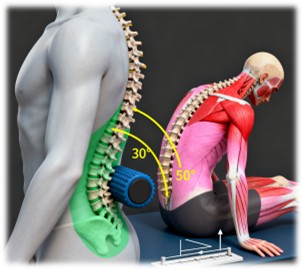
Lumbar flexibility is essential for maintaining spinal health and preventing lower back injuries. Limited lumbar flexibility can restrict movement and place undue stress on the spine and surrounding muscles. Roller massages have been shown to increase lumbar flexibility by directly targeting the thoracolumbar fascia and the muscles of the lower back. The sustained pressure applied during rolling helps to lengthen and relax these tissues, allowing for greater range of motion. In the aforementioned study, participants experienced a significant increase in lumbar flexibility, as measured by the sit-and-reach test, after undergoing roller massage interventions.
Strengthening of Abdominal Trunk Muscles
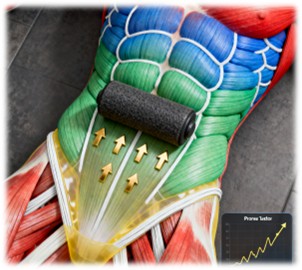
The abdominal trunk muscles, including the rectus abdominis, obliques, and transversus abdominis, are integral to core stability and overall trunk function. Weakness or imbalance in these muscles can contribute to lower back pain and impaired performance. Roller massages can enhance the strength of these muscles by promoting better fascial gliding and improving the efficiency of force transmission. The study highlighted earlier also revealed a significant increase in abdominal trunk muscle strength following roller massage, suggesting that this intervention can be a valuable component of core conditioning programs.
Comparative Analysis with Static Stretching
Static stretching has long been a staple in warm-up routines and rehabilitation protocols. However, recent research suggests that roller massages may offer superior benefits in certain aspects. While static stretching primarily focuses on lengthening muscles, roller massages address the underlying fascial system, which can lead to more comprehensive improvements in flexibility and strength. The study comparing roller massage and static stretching found that roller massage was more effective in enhancing myofascial gliding, lumbar flexibility, and abdominal trunk muscle strength. This comparative advantage underscores the potential of roller massages as a preferred intervention for optimizing lower back health and performance.
Practical Applications and Recommendations
Incorporating roller massages into daily routines or training programs can yield substantial benefits for individuals seeking to improve their lower back health and physical performance. For optimal results, it is recommended to perform roller massages for 2-3 minutes on each target area, focusing on the thoracolumbar region and other areas prone to tightness. Consistency is key, as regular application of SMR can lead to cumulative improvements over time. Additionally, combining roller massages with other forms of exercise, such as core strengthening and flexibility training, can create a holistic approach to maintaining musculoskeletal health.
Conclusion
The science of Self-Myofascial Release, particularly through the use of roller massages, presents a compelling case for its integration into sports medicine and rehabilitation practices. By enhancing myofascial gliding, increasing lumbar flexibility, and strengthening abdominal trunk muscles, roller massages offer a multifaceted approach to improving lower back health and performance. As research continues to uncover the intricacies of the myofascial system and the mechanisms underlying SMR, it is evident that roller massages hold significant promise for athletes and individuals seeking to optimize their physical well-being.
If you have related needs, please feel free to contact us for more information or product support.
Reference
- Nakai, Yuki, et al. "Effect of self-myofascial release of the lower back on myofascial gliding, lumbar flexibility, and abdominal trunk muscle strength: a crossover study." Sports 11.8 (2023): 147.
These products and services are for research use only and cannot be used for any clinical purposes!



 Fig.1 Flowchart of the crossover study: RM = roller massage; SS = static stretching; CON = control. (Nakai Y., et al., 2023)
Fig.1 Flowchart of the crossover study: RM = roller massage; SS = static stretching; CON = control. (Nakai Y., et al., 2023) 